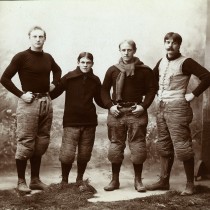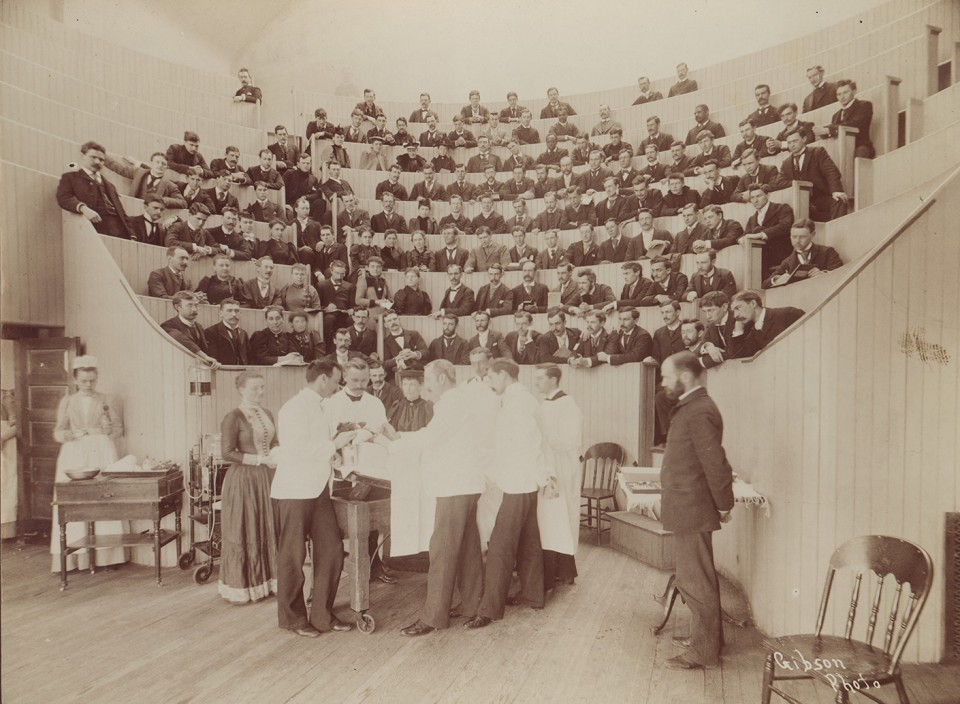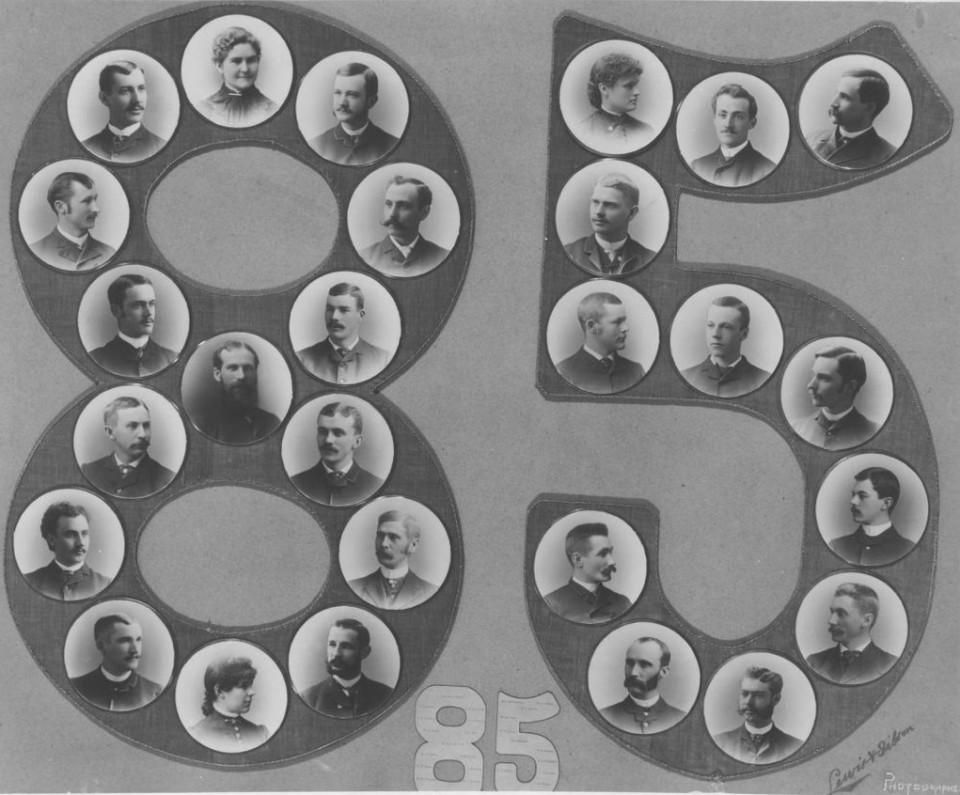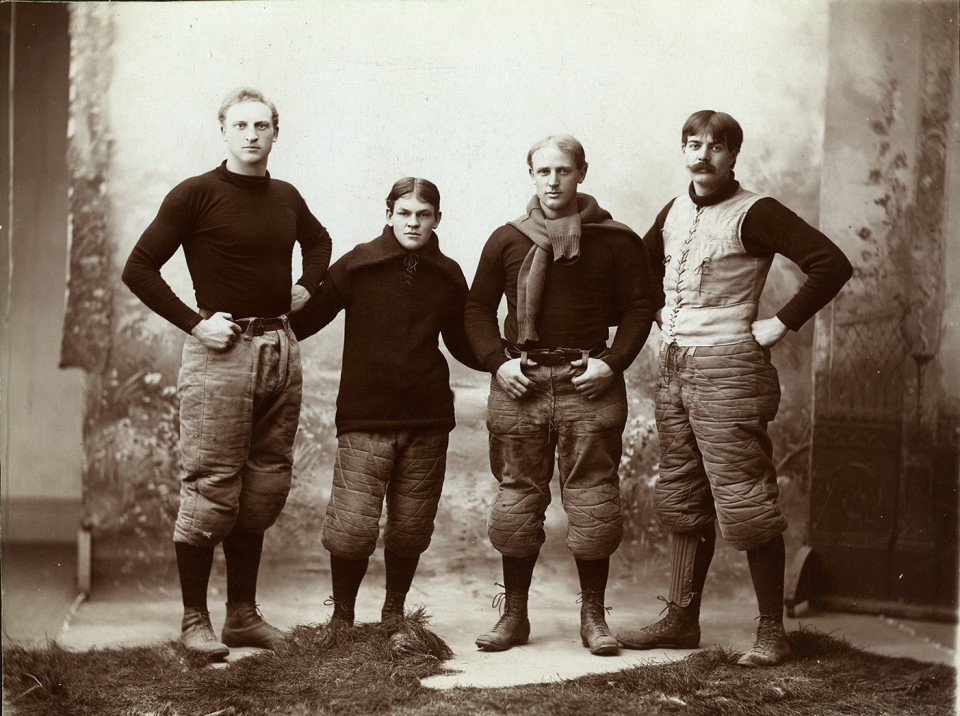Magazine

Lens on Gibson
In the Spring 2016 issue of Collections, we showcased the work of turn-of-the-century photographer John Jefferson Gibson. His images of the University of Michigan give viewers a glimpse into rarely before seen interiors, classes, people, and more. In addition to what’s in the magazine, here’s a look at more gems from his work, which spans several collections at the Bentley. You can always access his incredible pictures through our Image Bank as well.
More About Gibson
Born in London, Ontario, on August 18, 1851, Gibson moved to Michigan in 1870 and opened a photography studio in Bay City. In 1881, he opened a Detroit studio, followed by one in Ann Arbor when he partnered with Emerson B. Lewis in 1882 on a gallery on West Huron Street.
Gibson operated in Ann Arbor with various partners, advertising as Lewis & Gibson, Gibson, Morgan & Gibson, and Gibson & Clark. Gibson & Clark was a partnership with Ypsilanti photographer May M. Clark whom Gibson married in 1889. An enterprising man, Gibson opened studios in several other Michigan cities and in 1892 opened a Chicago location. Building on his reputation as an award-winning photographer, he was named as the official portrait photographer for the 1893 World’s Columbian Exposition in Chicago. Gibson’s studio was responsible for a remarkable series of images depicting the University’s facilities, laboratories, and classrooms featured as part of the U-M exhibit at the Exposition.
Gibson died of tuberculosis on October 8, 1902. The Chicago Historical Museum holds an eleven box J.J. Gibson collection containing family portraits and some of his photographic work from Michigan and the 1893 World’s Columbian Exposition.
Gibson the Photographer

The reverse of an 1890 cabinet portrait featuring the stylized JJG logo and advertisement for Gibson’s studio.
Whether town or gown, Ann Arborites of the late 19th century avidly embraced the still young art and business of photography. The 1891 Ann Arbor city directory listed seven professional photographers. Among the most successful, both commercially and artistically was J. J. Gibson. Aggressive advertising helped Gibson find steady business. Especially eager for University clientele, Gibson regularly advertised in campus publications.
An 1883 notice in the student newspaper The Chronicle provides a glimpse of his pricing. Students who sat for a portrait were offered a dozen cabinet photos for $3.00. Negatives were kept on file and cabinet photos were available for $0.25 for classmates interested in creating a class album (the Bentley holds a collection of class albums spanning from 1861 to 1887). Gibson’s advertisement in the 1888 Palladium yearbook touted that he was chosen as class photographer for the “Lits,” “Laws,” “Medics,” and “Dents,” citing that as “the highest recommendation that could be offered.”
Interschool and interclass rivalries were rampant, providing Gibson further opportunities to take group photos such as the senior “Lit” class champion football team. The best sellers, however, were photographs of the UM varsity teams and athletes. Gibson took several of the early team photos for football and baseball as well as individual portraits of athletes. The teams were posed in his studio, sometimes against elaborate backdrops with real sod on the floor. One of Gibson’s apprentices, Fred Rentschler, went on to open his own studio and eventually took over the annual varsity team photo business. Rentschler’s studio operated in Ann Arbor until 1971. Rentschler’s negatives, which came to the Bentley in 1983, included several of Gibson’s team photos.
Gibson’s Photography for the U-M display at the 1893 World’s Columbian Exposition
Gibson’s most important work for the University was a remarkable series of images depicting the campus buildings and interior views of classrooms and laboratories that he was commissioned to take in 1893. The University had a major exhibition at the 1893 World’s Columbian Exposition in Chicago. The exhibit covered 2,700 square feet in the Manufacturers and Liberal Arts Building. Situated between Yale and the Massachusetts Institute of Technology, U-M sought to “present to the visitor a somewhat comprehensive idea of the University as a whole.”
Photographs depicting the buildings, facilities and apparatus played a key role in the exhibit. Gibson was paid $183 for his photographic work. He agreed not to charge for negatives which would produce marketable views, instead charging mainly for the prints used in the exhibit. Gibson produced richly detailed images captured on 8″ x 10″ glass plate negatives. His images allow rare glimpses inside the classrooms, library, faculty offices, and the scientific teaching and research spaces. Gibson’s most notable work is a thorough study of the Medical School. A detailed write up on the U-M exhibit appeared in the June 1893 University Record. The article described the “thirteen large and sixty-one small photographs of buildings, laboratories, and apparatus” illustrative of “the work done in the school and in its separate departments.”
Framed displays reflected the course of instruction in the Medical School and included a catalog and printed descriptions which outlined the work done in each of the departments. The left side of the display contained photographs illustrating the work of the first and second year, including anatomy, chemistry, physics, bacteriology, histology, physiology, and electro-therapeutics. On the right side were photographs “illustrative of the more practical studies of the third and fourth years,” which encompassed internal medicine, materia medica, surgery, obstetrics and gynecology, diseases of the nervous system, and pathology.
Printed descriptions accompanied the photographs. Several of Gibson’s images produced for the exhibition bear gold stamped captions at the bottom. Many of the photographs taken by Gibson are available in this portfolio of his work in the Bentley’s Image Bank.






